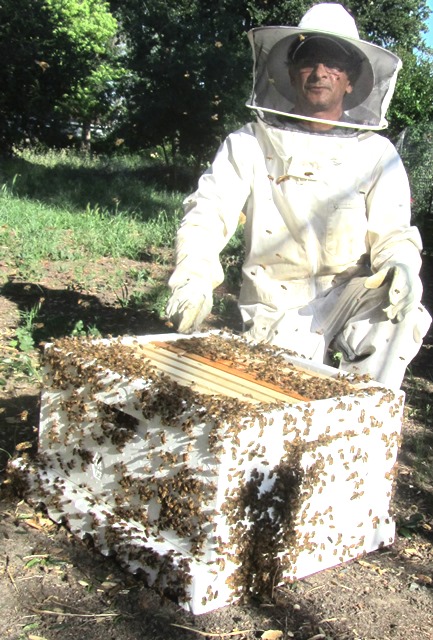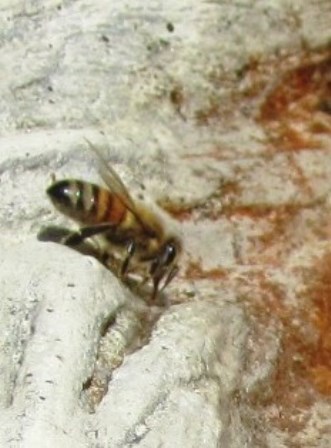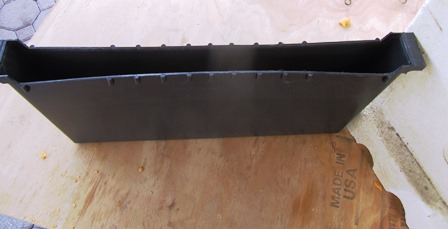Killer Bees Found for the First Time in the East Bay
Global warming might be responsible for our extreme summer heat and the multi-year drought in the Bay Area. It might also explain the presence of killer bees, too. For the first time, U.C. San Diego scientists tracking the Africanized honeybees have found them here in the East Bay city of Lafayette.
The Oakland Tribune suggests the Africanized honeybees are docile unless their hive is threatened. Otherwise, the Africanized or “killer bees” are of similar temperament and have a similar sting as the European honeybees. See, http://www.insidebayarea.com/breaking-news/ci_28892198/killer-bees-detected-lafayette-bay-area-first-time?source=rss
The Africanized bees were bred with European honeybees in Brazil in 1956 to produce a honeybee better suited to Brazil’s climate. The bees escaped their containment, bred with European bees and spread.
The Africanized bees breeding with European honeybees quite possibly means the resulting bees may have a stronger resistance to one of diseases believed responsible for European bee die-offs and colony collapse disorder.
Widely published stories today tell us that the killer bees have been detected in Briones Regional Park in Lafayette, only ten miles from where I keep bees on the Henny Penny Farmette.
Researchers from U. C. San Diego have tracked the bees throughout the state. Likely more than one colony has been established here. But whether or not the bees stay remains to be seen. See, http://www.sfgate.com/bayarea/article/Killer-bees-found-in-the-Bay-Area-for-the-6535892.php
Bees prefer warmer, drier habitats, so they may not stick around. The strong El Nino forecast for this winter could bring much needed rain to the Bay Area and plunging temperatures to the freezing mark.
Africanized bees swarm relentlessly when they perceive a threat. If you are out walking and notice bees foraging on wildflowers, become vigilant. They may not bother you. But do observed them. Don’t swat at them, it will antagonize the bees.
If they start moving toward you, run to at least 100 yards away. Retreat indoors if possible. Don’t think you can escape by jumping into a lake or pool. Researchers say the killer bees have been known to wait above the water.
To read an in-depth analysis of the Africanized honeybee, see http://www.library.ca.gov/crb/99/notes/v6n2.pdf.
To curl up with a cozy mystery that features gentle honeybees, check out my newest novel, A BEELINE TO MURDER: http://www.amazon.com/s/ref=nb_sb_noss?url=search-alias%3Dstripbooks&field-keywords=Meera+Lester&x=0&y=0
To Feed or Not to Feed the Bees?
Mid-September is a time when beekeepers check their hives and consider the prudence of harvesting more honey or leaving it as well as whether or not to feed the bees. Honeybees, like many living creatures on our planet, need food and water to survive.
My wise beekeeper neighbor tells me that the hive needs to have sixty pounds of honey to make it through winter. He’s feeding his bees now a mixture of sugar and water.
The sugar-water inserts are black plastic holders that get inserted right into the hive in place of a frame. They are rigid enough to hold the sugar-water but pliant enough to swell outward, so conventional wooden frames of honey and wax help them stay in place. The downside is that bees can drown in these feeders. And if the beekeeper lets them go empty, the enterprising bees will just build comb and honey inside them.
There are several kinds of feeders–all with benefits and also drawbacks. For more information on feeders, see: http://www.honeybeesuite.com/what-type-of-honey-bee-feeder-is-best/
Last year, I didn’t take honey in the fall. I wanted to ensure the bees had what they needed to survive after they’d been through yet another summer of drought. There aren’t a lot of pollen-rich flowers to be found now. However, star-thistle still dots dry hillsides of Contra Costa County (where I live) and particular eucalyptus species that the bees like are blooming now.
I’m hopeful that this will be the last year of drought for a while. Weather forecasters say we have a strong El Nino that’s formed and will likely bring rain during our rainy season (November through April). That will be good news for the bees and those of us who love to plant flowers in our gardens to attract pollinators. But until the wet stuff starts coming down and new pollen sources are abundant, we beekeepers need to keep a close watch on our industrious little honeybees.
 Facebook
Facebook Goodreads
Goodreads LinkedIn
LinkedIn Meera Lester
Meera Lester Twitter
Twitter







